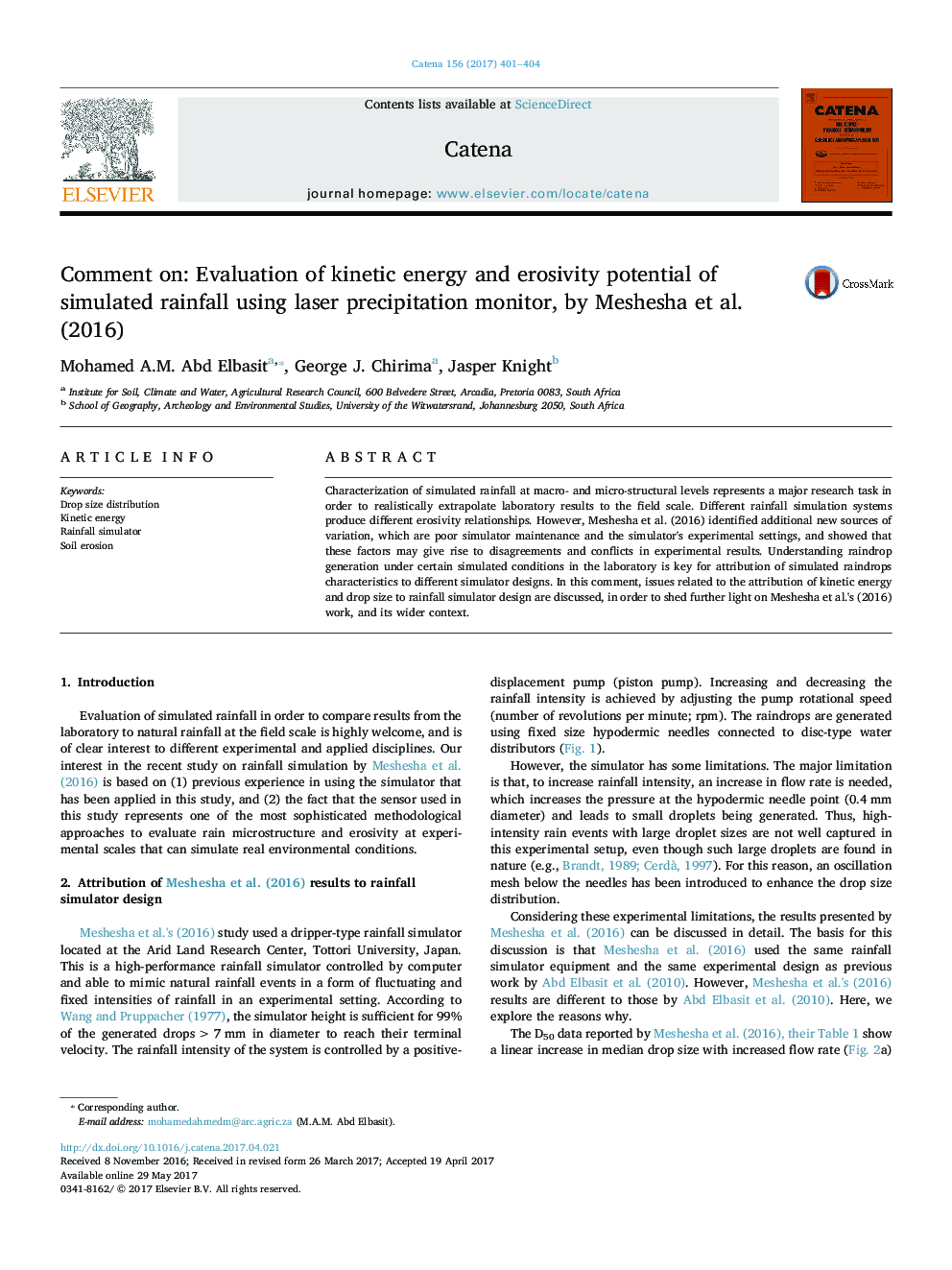| Article ID | Journal | Published Year | Pages | File Type |
|---|---|---|---|---|
| 5770015 | CATENA | 2017 | 4 Pages |
â¢Rain simulator must mimic natural rainfall.â¢Raindrop generation mechanisms are major way to optimize the rainfall simulator.â¢Development of standardized methodologies will ensure the replicability.
Characterization of simulated rainfall at macro- and micro-structural levels represents a major research task in order to realistically extrapolate laboratory results to the field scale. Different rainfall simulation systems produce different erosivity relationships. However, Meshesha et al. (2016) identified additional new sources of variation, which are poor simulator maintenance and the simulator's experimental settings, and showed that these factors may give rise to disagreements and conflicts in experimental results. Understanding raindrop generation under certain simulated conditions in the laboratory is key for attribution of simulated raindrops characteristics to different simulator designs. In this comment, issues related to the attribution of kinetic energy and drop size to rainfall simulator design are discussed, in order to shed further light on Meshesha et al.'s (2016) work, and its wider context.
